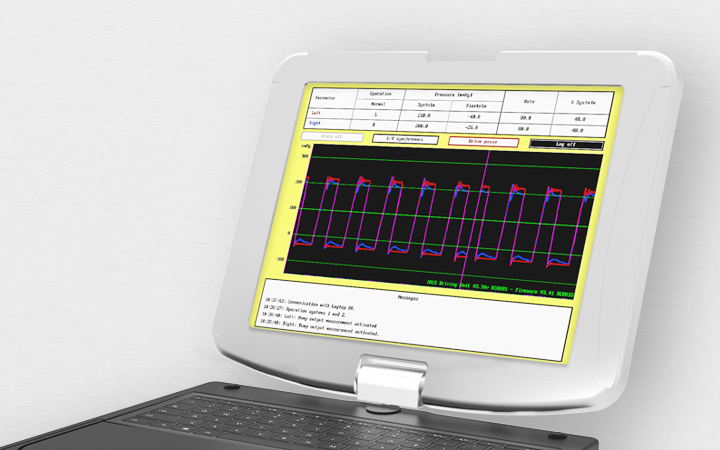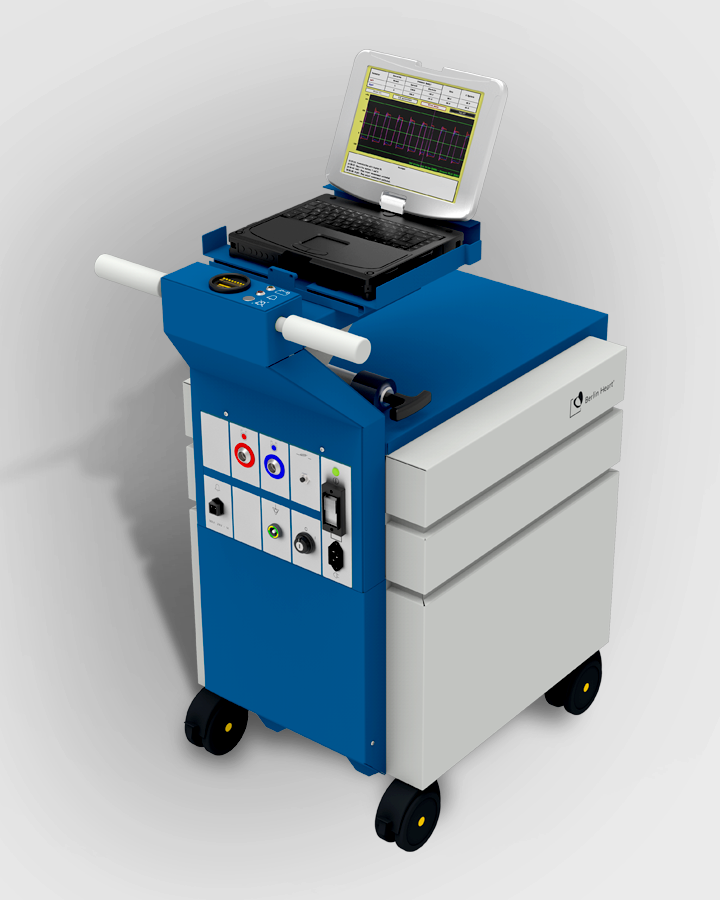
Legacy Software »Ikus User Interface«
EXCOR® Pediatric is a mechanic, pulsatile ventricular assist system for patients with terminal heart insufficiency. The »Ikus« drive unit is designed for the inpatient care of such patients.
EXCOR® Pediatric is a mechanic, pulsatile ventricular assist system for patients with terminal heart insufficiency. The »Ikus« drive unit is designed for the inpatient care of such patients.

The Task
To keep reliable legacy software on the market
Since the »Ikus« drive unit obtained the CE mark in 1996, it has been used to treat many thousands of patients in 41 countries around the world. The unit contains several microcontrollers with assembler and C-code. The system's user interface runs under MS-DOS on a laptop.
To meet the project goal, documentation for the software had to be drawn up retrospectively to achieve conformity with IEC 62304. As part of this process, the drive software was initially categorised as Class C and the laptop software as Class A. Later, however, the notified body categorised both as Class C. Our task was to prove the required conformity retrospectively and thus to enable the software to continue being used as part of the Ikus system.

»The goal was efficient minimization of risks, not the retrospective documentation of the software as an end in itself. As such, our core question was always: where do risks still exist?«
Dr. Dominik Karch

Our Approach
To use resources as efficiently as possible
Existing documentation was to be identified and used wherever possible as part of the verification process.
The core of the CODIALISTS' risk-based strategy for verifying conformity with the standard lay in the application of sub-section 4.4 of IEC 62304, »Legacy Software«, in place of sections 5 to 9. This allowed resources to be used as effectively as possible for the minimization of risks arising from the use of a software in a life-sustaining medical device. The CODIALISTS' systematic approach consisted of the following:
- Conducting a risk analysis
- Creating a gap analysis and assessing the gaps
- Identifying and carrying out necessary risk management activities
- Drawing up a justification for continued use of the legacy software
The Result
We focus on what is needed and engage with legacy systems where the task calls for it.
On the basis of the gap analysis, the CODIALISTS were able to supplement the risk documentation with an analysis of the hazardous situations connected with use of the laptop software. With the help of the risk control measures available in the system and the results of complaint analyses, it was possible to demonstrate that the identified risks had been effectively reduced to an acceptable level.
Regarding the specification and verification of the system, the CODIALISTS were able to demonstrate that the existing requirements specification also specified the functionality of the laptop software in sufficient detail and thus that the existing verification documentation was sufficient.
The CODIALISTS opted not to supplement the missing design documentation, since this would not have contributed to the overall risk minimization goal. All results were presented as part of a joint document. As a result of the project, the software was successfully retained on the market as legacy software pursuant to IEC 62304.

